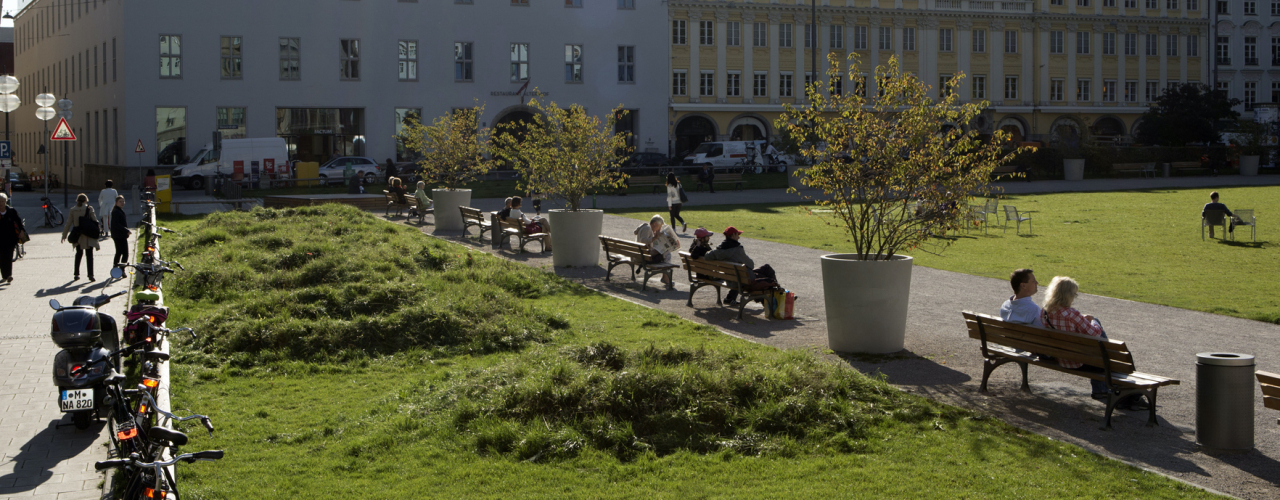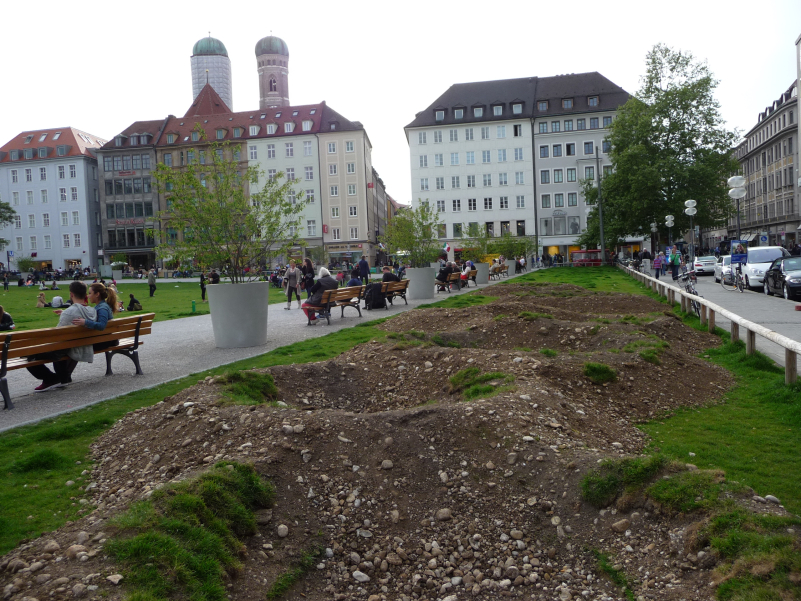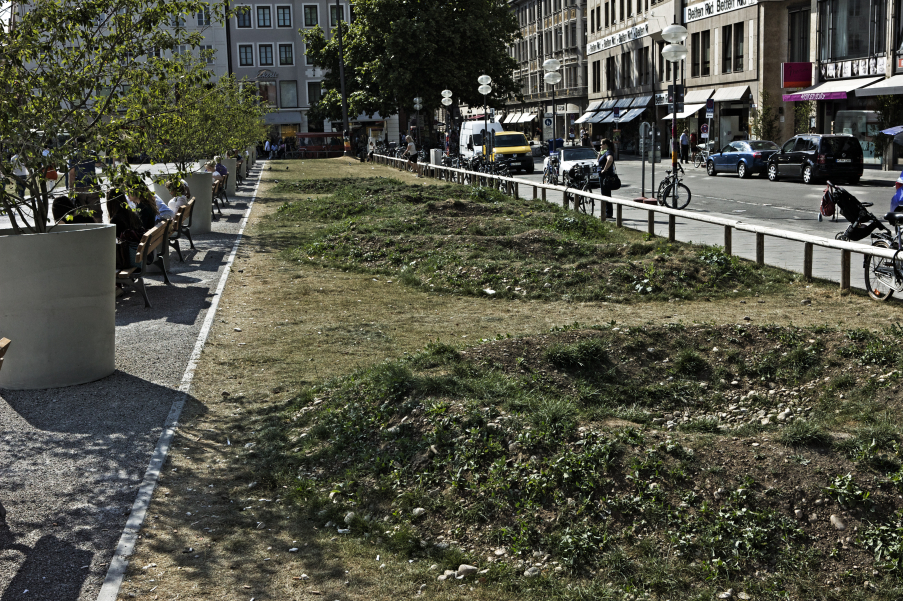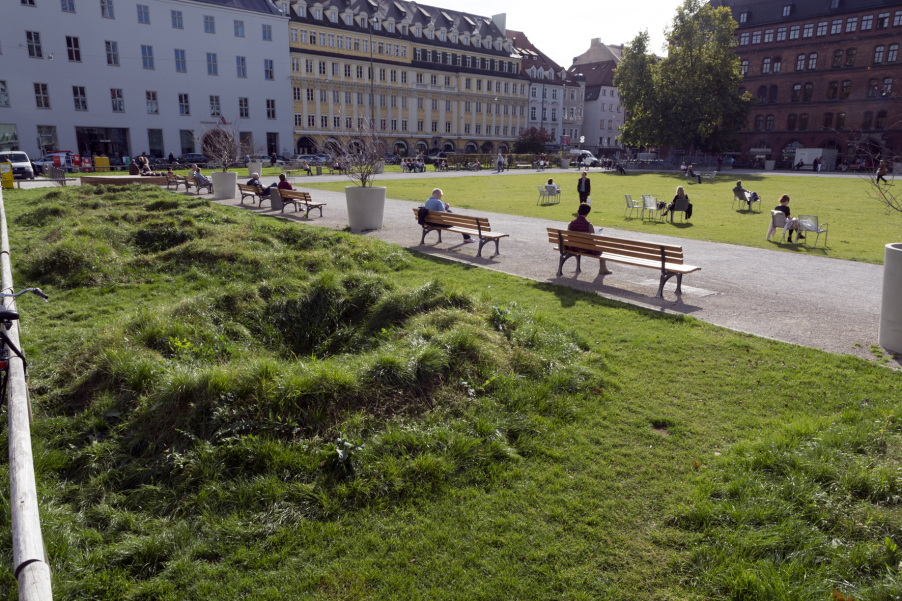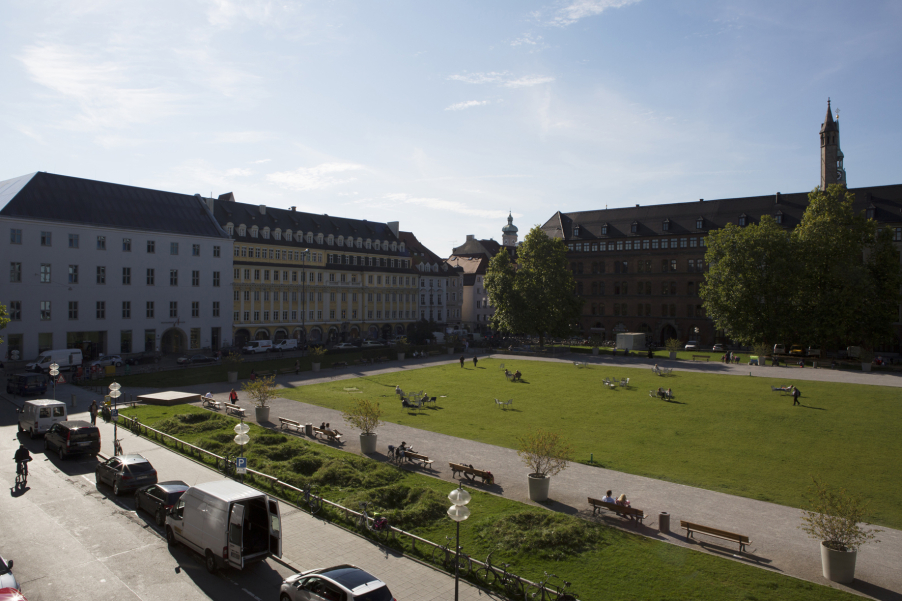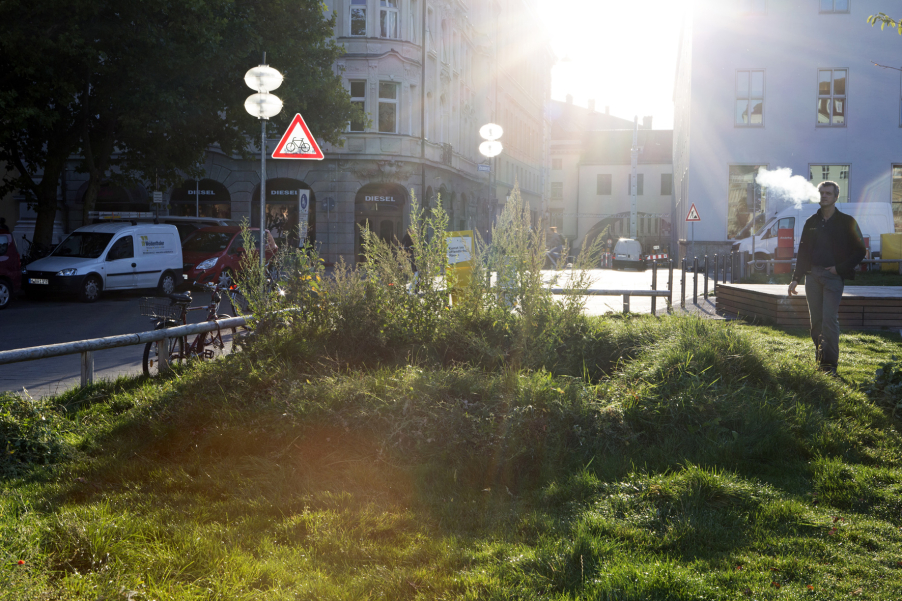The First World War began on 28 July 1914 when Austria-Hungary declared war on Serbia following the assassination in Sarajevo. In the most extensive war in history up to that point, around 70 million soldiers from around 40 countries were under arms until the armistice on 11 November 1918.
On the battlefields around Verdun in France in 1916, in one of the most brutal and casualty-laden battles of the First World War, countless shells and bombs tore up the ground and created crater after crater. This led to the creation of a small-scale sequence of hills and depressions that were overgrown by grass and trees for decades now.
On an approx. 7 m wide strip of grass on the northern edge of the Marienhof in Munich, the artist Martin Schmidt has modelled a crater landscape from mounded and excavated earth, similar to that found in Verdun. Martin Schmidt sows the resulting landscape with grass, creating soft hills. The crater field becomes accessible and the highs and lows can also be used as a seating area. Without barriers, it becomes part of the park. For attentive visitors, the installation reveals itself as a crater area, while others use it as a resting place. The artist’s project thus addresses the transformation of horror into bearable memory but also the increasing forgetting.
Martin Schmidt, born in Munich in 1963, lives and works in Munich.
